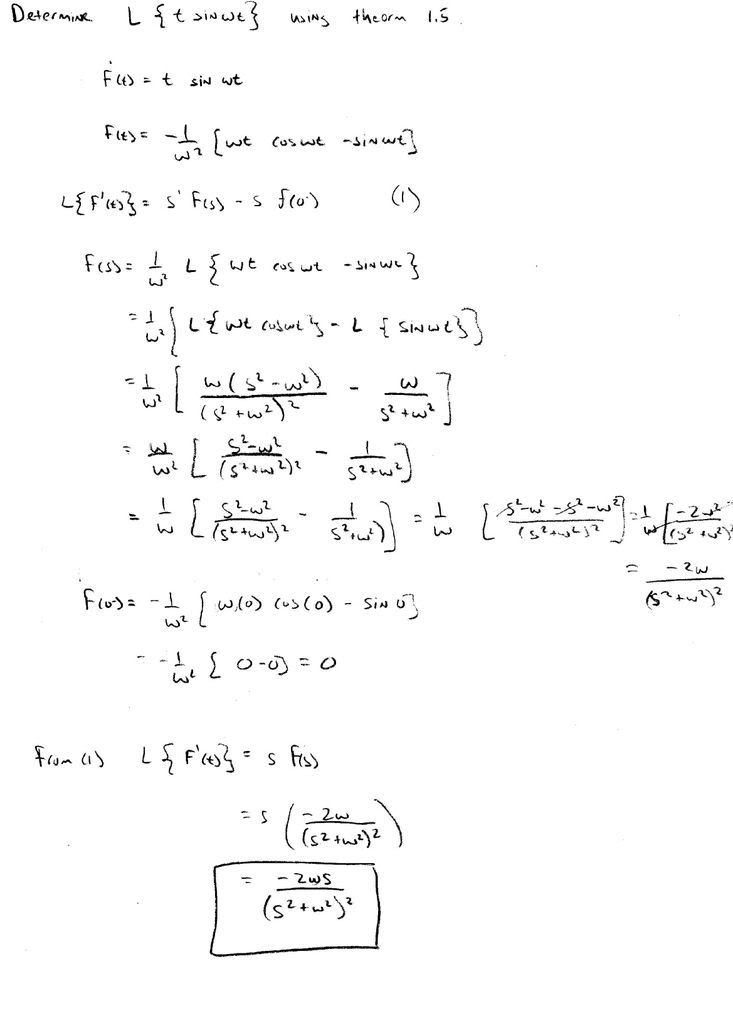I need to determine the lapace transform of {t sinwt} using a specified theorm found on this link
http://en.wikipedia.org/wiki/Laplace_transform
Under "General Differentiation" on the Properties of the unilateral Laplace transform table.
The problem is that the function t sin(wt) is not to any power which the therom calls for. I suspect that we first need to convert this function to a function to a power and then use the theorm to solve but I am not sure and I can't think of any power function to convert it to.
We are required to use this particular theorm to sole the problem. Any help would be greatly appreciated,
Thanks
http://en.wikipedia.org/wiki/Laplace_transform
Under "General Differentiation" on the Properties of the unilateral Laplace transform table.
The problem is that the function t sin(wt) is not to any power which the therom calls for. I suspect that we first need to convert this function to a function to a power and then use the theorm to solve but I am not sure and I can't think of any power function to convert it to.
We are required to use this particular theorm to sole the problem. Any help would be greatly appreciated,
Thanks

